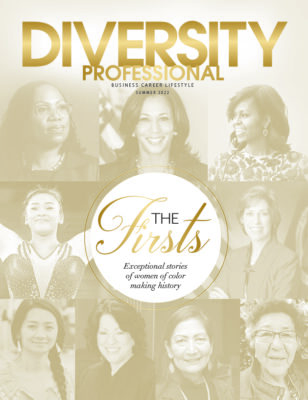Create A Diversity And Inclusion Council For Small Business Success
Build a team as a strategic component of your evolving corporat e landscape.
Many people perceive that in order to create a robust Diversity and Inclusion (D&I) plan you have to be a large organization with deep pockets. This is not true. D&I is everyone’s responsibility. However, to optimize efforts, it is considered best practice to have someone in the organization who intentionally focuses on strategies to build and maintain an inclusive culture. Otherwise, as the saying goes, “If you don’t intentionally include, you will unintentionally exclude.”
The reality is some organizations are not in a position to assign the role of D&I to a particular staff member. Others might not have the resources to afford a full-time position. Unfortunately, when a staff member isn’t specifically assigned D&I responsibilities, the work might just be “layered on” as an afterthought to other duties. This creates roadblocks that can lead to negative consequences, questioning the authenticity of the initiative.
But I believe it’s critical for small business success. Instead of assigning D&I responsibilities to one person, creating a Diversity and Inclusion Council where multiple staff members collaborate can be a solution.
Tips for creating a D&I council
When creating a Diversity and Inclusion Council, you must be very specific on how you structure that council to ensure high performance. Similar to an affinity group, Employee Resource Group (ERG) or Business Resource Group (BRG), you must have leadership sponsors who support the efforts of the group. The sponsor’s role is to help align the council’s efforts with the goals of the organization—all through a lens of D&I.
■ Ensure clarity in the role, purpose and function of the council. All of these need to align with the overall goals and missions of the organization.
■ Be selective on who you bring on the council. Many organizations casually ask people to serve on a committee or invite them because they seem interested in D&I. You must have a strategic approach to who you invite to the council and how that invitation is extended.
■ Be thoughtful about how this position is created. The invitation to participate should come from the most senior leader and feel like a privilege. Make it feel like a significant appointment (because it is).
■ Consider the terms of service. What is the structure? Do you have subcommittees? Do you need a chair? How are individuals selected? You don’t want a council that’s very large in size, but you want ways to engage and get buy-in from others. That’s where subcommittees can be important.
■ Make it a big deal! Have a launch event. Show people what it is and how you can partner. Make the creation of it just as important as the work.
■ Always have a commitment statement. This helps people understand what they’re really getting involved with. Attach the purpose of the council to the business case for D&I.
■ Ensure a safe space for all. Remember that these are peers who are there to learn and challenge each other. If the group is not conditioned to operate in that lens, how effective are they going to be in modeling that into the culture of the organization? It’s important to have values that are respected and accepted.
■ Establish tone and consistency. How the group interacts should be specified through clear expectations and agreements. Routinely post these on the agenda as a ready reference for scope of work.
With many organizations, people will see the function of the council as a “grievance body” to bring complaints of exclusion or discrimination to. But that is not the point of the group. It’s meant to be a strategic and productive body to implement policies, systems, procedures, and tracking metrics for D&I. To make this work viable, it’s also vital to coach departments to include D&I in high-level strategy and decision-making. It is important to remember that D&I work is progress, not perfection. There’s no target or destination. You’re constantly evolving with the changing needs of your corporate landscape.
 NIKA WHITE»
NIKA WHITE»
“If you don’t intentionally include, you will unintentionally exclude”.









